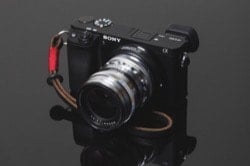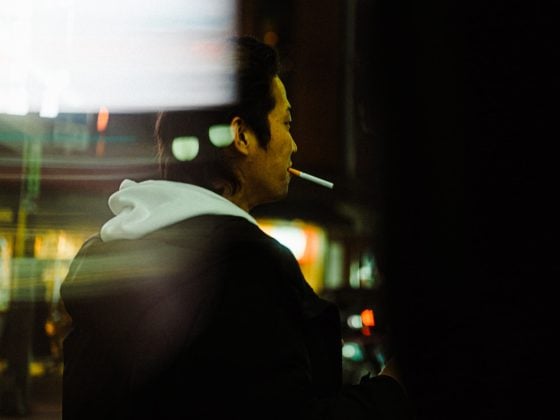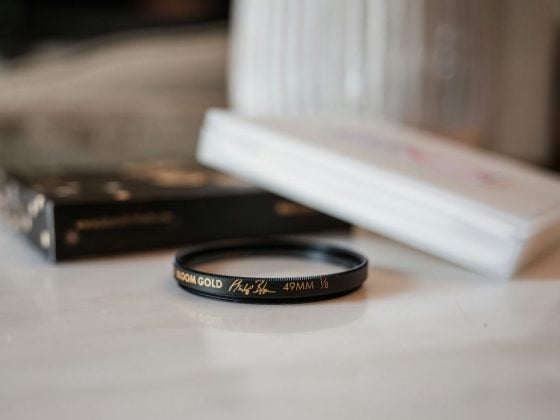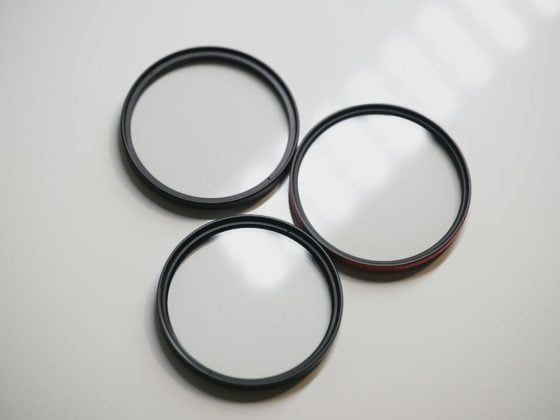
The Sony A6300 and Fujifilm X-Pro 2 are probably the two most interesting mirrorless APS-C cameras on the market right now. Although they seem similar because they both feature a 24 megapixel Sony sensor and an EVF off to the side, the cameras are actually very different. Not only in terms of ergonomics but the technology that powers them. With most review sites only fixating on high ISO performance, sensor sharpness and auto focus, I wanted to take this time to point out that there is a lot more to a camera besides what the sensor can do.
Here is the quick comparison between the A6300 and the Fujifilm X-Pro 2.
Sony A6300 vs Fujifilm X-Pro 2 Stats
| Specs | Sony A6300 | Fujifilm X-Pro 2 |
| Sensor | 24.2 APS-C Exmor CMOS | 24.3 APS-C X-Trans III CMOS |
| Optical Low Pass Filter | Unknown | No |
| Processor | BIONZ X Image Processor | X-Processor Pro Engine |
| LCD Screen | 3″ 921.6k Dot | 3″ 1.62m-Dot |
| Tilt Screen | Yes | No |
| Memory Card Support | Single UHS-I | Dual UHS-II / UHS-I |
| Max Write Speed | 32 MB/s | 102 MB/s |
| FPS | 11 Continuous | 8 Continuous |
| EVF | 2.36m Dot | 2.36m Dot |
| EVF Framerate | Unknown | 85fps |
| OVF | No | Yes |
| On Camera Flash | Yes | No |
| Weather Sealed | Yes | Yes |
| Weight | 14.25 oz / 404 g mem card + battery | 15.70 oz / 445 g Body Only |
| Video | ||
| Resolution | 4k 30p-60p | 1080 60p |
| Bit Rate | 100M-60M | 36M |
| S-Log | Yes | No |
| Likely To Overheat | Yes | No |
| Lenses | ||
| Total APS-C Prime Lenses | 6 | 12 |
| Total APS-C Zoom Lenses | 8 | 7 |
| Totall Full Frame Lenses | 14 | 0 |
Sony A6300 vs XPro 2 Stat Comparison
Just from looking at the specs you can see there are some huge difference between these two cameras. Both cameras out shine the other but in different ways.
It’s said by many review sites that the Sony A6300 has an optical low pass filter, but I’m seeing a lot of issues with moire patterns and I’m not really seeing any drop in sharpness, so they could be wrong. It’s also never been confirmed or denied by Sony. It’s tough to know since Sony bakes their RAW files in mysterious ways, so I’m marking this as unknown for now.
The Sony A6300 uses the same old BIONZ Image processor as the A6000, where as the X-Processor Pro on the Fujifilm X-Pro 2 is brand new.
When looking at the rear LCD screen the Sony still keeps it’s old 921.6k Dot screen while the Fujifilm has a 1.62 million dot screen. That gives the Fujifilm 55% more resolution.
The Sony has a faster burst speed at 11fps, it also has an on camera flash, tilt screen and is much lighter. Not to mention, 4k video.
ISO, Detail, Moire and Noise Handling
For these tests I shot with the the Voigtlander f1.7 Ultron adapted to each camera. I initially tested the X-Pro 2 and kept track of the ISO, fstop and shutter, so I could apply the same settings with the Sony A6300.
I shot at f5.6 and only changed the ISO and shutter speed to get the different results. Since Sony and Fujifilm balance their ISO setting slightly different, I lowered the exposure on the Sony A6300 by -0.35 stops to get the same tonal exposure. I also turned all sharpness and noise control settings off in Lightroom and Iridient Developer.
It took me awhile to get this right. Nailing focus is always challenging with manual lenses and there is no manual focus assist on the A6300 that works with third party manual lenses.
ISO 200
ISO 200 Results
Right now it’s looking like the X-Pro 2 is cooking the RAW data with a bit more noise control that may be contributing to the softer look. The Sony A6300 seems to cook the RAW with slightly more sharpness.
It also looks like the Sony A6300 has a bit of an issue with moire, creating some terrible chroma patterns. This only happens when I get absolutely perfect focus. If the focus is slightly off this issue isn’t as severe but the image is slightly softer. In real world shooting it probably won’t be much of an issue unless you like to shoot $1 dollar bills from about 4′ feet away. These results kind of lead me to believe that the A6300 does not have an optical low pass filter because it’s performing a lot like the Nikon 7200.
Lightroom vs Iridient
I tested with both Iridient and Lightroom, with all settings turned off. I didn’t notice any huge gains in sharpness with the X-Pro 2 in Iridient over Lightroom, but the Sony A6300 did have more issues with chroma in Iridient than it did with Lightroom.
ISO 128,000
ISO 128,000 Results
While both cameras have some amazing sharpness and high ISO capabilities. The X-Pro 2 at ISO 128,000 does seem to resolve a bit more detail, with the A6300 the chroma seems to gets pretty ugly. You may or may notice this in real world shooting, but either way, the cameras are very close and you would probably only shoot at ISO 128,000 in the real world for emergency situations as the images produced are borderline unacceptable unless maybe converted to B&W.
While the X-Pro 2 does seem to have a slight advantage in low light with its sensor performance, the Fujifilm camera system as a whole gains even more of an advantage since it has more lenses that are faster and less expensive which in turn means shooting at lower ISO values. Unless of course you go with third party lenses.
Lenses
Quantity vs Quality
This is important and is something that shouldn’t be overlooked. When it comes to lenses, Sony produces a total of 14 APS-C lenses while Fujifilm produces 19 with 12 of them being primes.
You’re options for E-Mount lenses significantly out matches your options for Fujifilm XF lenses, but you have to consider, most of the good lenses are designed for the Full Frame E-Mount system and are significantly more expensive.
When it comes to finding lenses that are a good match for your camera, Fujifilm wins the prime game, with twice as many less expensive APS-C options of lenses that are significantly faster.
However, the Sony does have more zoom lenses but most of them have variable apertures and are a bit slower than Fujifilm lenses. So when it comes to shooting in low light, you’re going to have more options for faster lenses with Fujifilm that are reasonably priced.
Lenses And Low Light
Lenses are important when you want to compare low light performance. If a camera platform offers faster lenses at a cheaper price, then it won’t matter if one cameras ISO out performs another, the camera with the better lens wins.
Like mentioned, Sony shooters you also have the option to use full frame lenses. They are going to be a lot more expensive and a lot heavier, some of them will also likely not balance well with your camera, or will block your AF Illuminator, but they are great. I personally use the full frame Zeiss 35mm f2.8 lens on my Sony A6300 and it’s works better as an APS-C lens than it does as a full frame lens but it was $900 dollars vs my 35mm f2 on my Fujifilm that was $400.
See the Sony APS-C Lens List or the Fujifilm XF Lens List
Sony A6300 vs Fujifilm X-Pro 2 -Which Camera Is Better?
I would say after using both cameras for awhile, that neither is better. I love my A6300 and it has some really nice advantages over the X-Pro 2 that lend itself more towards being a better adventure camera. It’s weather sealed, shoots 4k, very light, small and has a tilt screen. This would be the camera I take with me on that cross country bike ride or hiking trip.
But I also love my X-Pro 2. It’s all around classier. The camera itself is almost a fashion statement. This would be my choice for studio shooting, landscape photography or even weddings. It’s a beautiful camera and it produces some of the best images I’ve seen. And if Photoshop and Lightroom are not your forte, then the film simulators produce some amazing JPEGs right out of the box.
Now, if I had to choose one camera to be stuck on a desert island with, it might be the Sony A6300. It’s lighter, smaller and has a tilt-screen so all around it’s just slightly easier to handle.
Now if you want the best APS-C mirrorless camera on the market, check out the Fujifilm X-T2 Review.
| **This website contains affiliate links. We will earn a small commission on purchases made through these links. Some of the links used in these articles will direct you to Amazon. As an Amazon Associate, I earn from qualifying purchases. |









